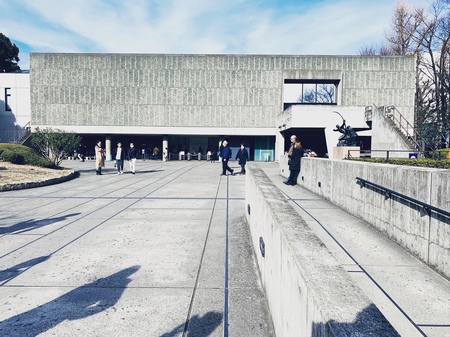不変は曖昧を排除
その日の気分によって違って見える建築ができるポイントは余地、余白よりも、中庸で何か足せる状態、とした。
建築で意図的に、中庸で何か足せる状態をつくるにはどうすればいいのだろうか。
ただ、何か足せる状態といっても、例えば、茶室のように、茶会の度に、掛け軸やお花などを足すことができるようにすることでは無くて、人が意識の中で何か足せる状態、気分を投影できる状態。
だから、むしろそれは、完璧な秩序を持った状態では無くて、それは、言い換えると、幾何学的な秩序を持った状態では無いのかもしれない。
秩序が不完全な所に何か足せる、そこに気分が投影できる。
20世紀のモダニズム建築は、幾何学的な秩序により、不変を表現し、場所や時間を超越しようと試みた。ただ、その不変が故に気分の入り込む余地が無い。
すなわち、もしかしたら、モダニズム建築は人の曖昧な所を排除する形で成立していたのかもしれない。
"Immutation eliminates ambiguity"
According to the mood of the day, the point at which building that can be seen differently is roomable, more moderate than the margin, and a state where anything can be added.
How can we make a condition that can be added intentionally, moderately in architecture?
However, even if it is said that some state can be added, for example, it is not like to be able to add hanging scrolls and flowers, etc. every time a tea ceremony, like a tea room, so that people can add something in consciousness A state where mood can be projected.
So, rather, it is not in a state with a perfect order, in other words, it may not be in a state with a geometric order.
Add something to the place where order is incomplete, you can project mood there.
The modernism architecture of the 20th century tried to express invariance and transcend place and time by geometric order. However, because of that immutability there is no room for mood to enter.
In other words, it may be that modernism architecture was established in the form of eliminating ambiguous places of people.

